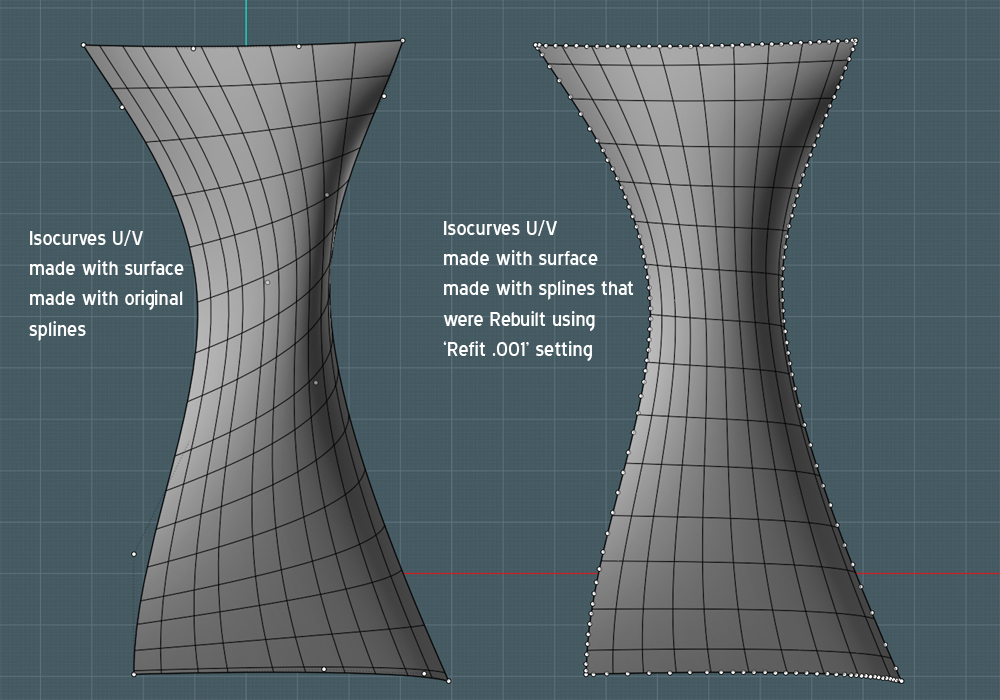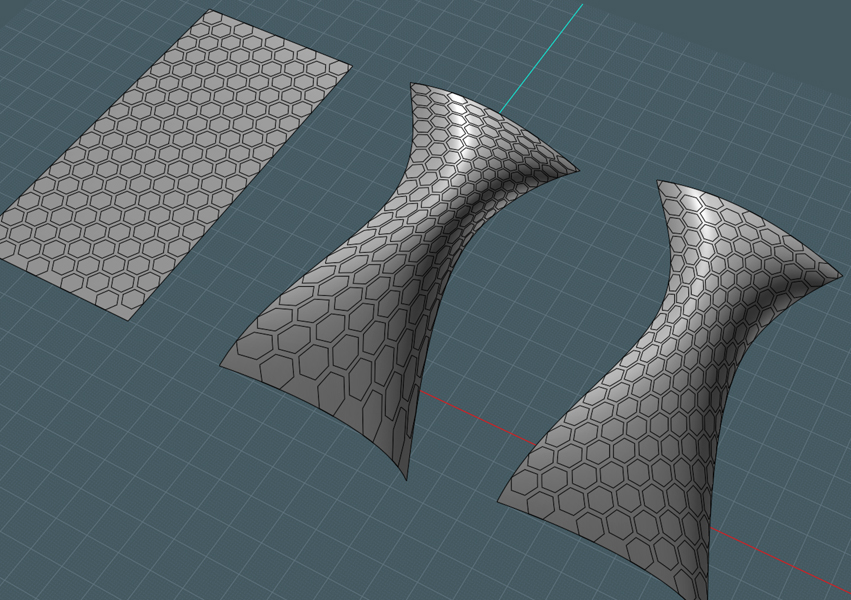Take note:
The distribution of U/V coordinates on a surface is based on the special distribution attributes found in the creation splines makeup.
In the following pic: The surface on the left was created with splines made originally with the FreeForm tool.
The splines themselves were copied to the right and the 'Rebuild' command was run. The mode of 'Refit' was chosen, and in this tolerance of 0.001 was used in this example.
As you can see, there are more points defining the splines, but really what has happened here was that the splines have now been refit with internal attributes that make them 'flow' with a more physically even distribution.
With the surface Networked from these splines, you can see that the distribution of the Isocurves U/V are more 'logical' and even in appearance.

This 'Rebuild' process also applies for Flow tool use.
 |